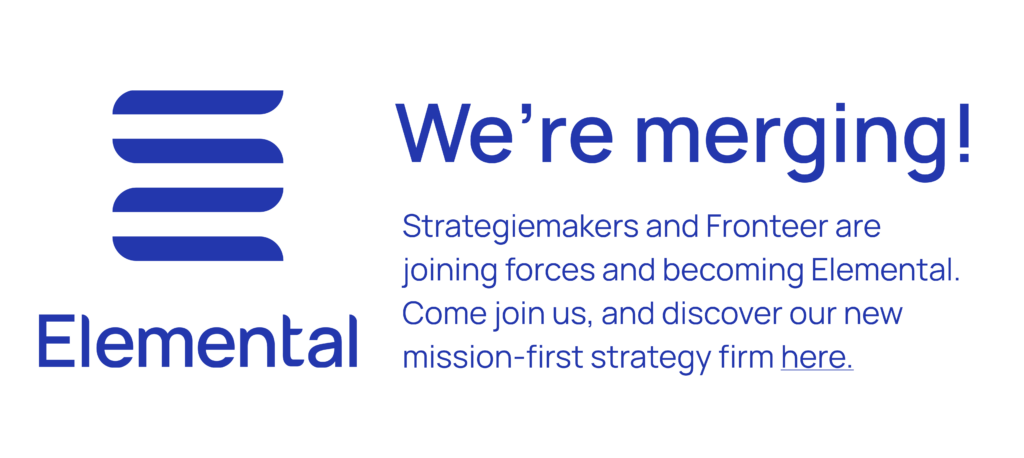“Today we have economies that need to grow, whether or not they make us thrive. What we need are economies that make us thrive, whether or not they grow.”
Kate Raworth
Thrive
Thrive is the new growth. It replaces the one-sided view of understanding growth solely in financial terms. It makes ecology and social well-being just as important as economic progress.
From a thrive perspective, everything exists and can continue to exist through regeneration. This applies to people and animals, but also to organizations and systems, such as ecosystems, societies and economies. Without regeneration there would be no start-ups, no new initiatives, no technological innovations, no developing of countries; no rise of civilizations, no forests and oceans where species live, no living earth.
We want to regenerate, we want to thrive. This means that we create, build with positive impact, while reducing and dismantling at the same time. It’s a process of creative destruction, of continuous innovation, where successful innovations replace the status quo.
Innovation has always been the true source of economic growth. It must become the engine for thriving organizations as well. Let’s measure the success of innovation in how it contributes to ecological and societal regeneration. This is how organizations contribute to a thriving sustainable society.
Sustainable society
A sustainable society is a society that meets the needs of the present generation without compromising the possibilities for future generations. A sustainable society attaches importance to multiple forms of value:
- Environmental value: nature facilitates life on earth and forms the basis for everything we (want to) do. But nature, and the earth, has its boundaries, the planetary boundaries. By respecting these boundaries we ensure both an earth that remains liveable while providing the renewable raw materials for our economy and for future generations.
How much value does your organization create for nature and the earth? - Social value: we are faced with major social challenges: in the field of education, health, equality, rights, etc. This is not just a concern for politicians and NGO’s. Your organization carries responsibility for promoting social and financial equality and inclusion.
How much value does your organization create for society? - Financial value: This is the perspective that dominates our current thinking on value. And indeed the current economic system generates unprecedented financial value and prosperity. But the insular focus on financial gains also creates a disregard for other forms of value, which is why we need to enrich it by integrating other sources of value.
How much financial value does your organization create and for whom?
New balance: Integrating social and environmental value into the strategy of organizations is the key to success. Organization create financial value through ecological and societal value, and not in spite of it. A win win.
This is not a nice-to-have. If your organization only focuses on financial value, you run the risk of falling behind, getting stuck with an outdated business model while others lead the way to positive and future-proof business models.
Organizations
Organizations hold the key to a sustainable society. This is why we help all organizations that want to do things differently. They are:
- Conscious: Conscious organizations realize that their business model does not always go hand in hand with creating social well-being and preserving or restoring the earth. These organizations realize this isn’t sustainable and that future activities must be in balance with social and ecological value.
- Committed: These organizations are committed to set and achieve social and ecological impact goals. By investing in new products and solutions and in building the skills and capabilities that the organization needs to transform.
- Entrepreneurial: the transformation is not easy and involves uncertainty. That requires entrepreneurship. To seizes opportunities by taking risks. Based on the conviction that action always contributes to progress. Employees are empowered to be entrepreneurial.
Making strategy
How? It all starts with strategy. Creating a clear long term strategy is necessary to build a future that looks different from today, a sustainable society. We call this: ‘Making Strategy’ as it goes beyond putting ideas to paper, we help to make these ideas reality. The core ingredients of our approach:
- Long term: design for the future, 10-20 years ahead in order to understand and see scenarios, stretch ambitions, identify certainties and uncertainties and determine options
- Real problems: Strategy making focuses on real, strategic problems to be solved and real choices to be made for the sustainable society to thrive
- Inclusive: we do it together, with the active contribution of a diverse mix of employees and stakeholders. This approach leads to a better understanding of different perspectives and actively builds commitment to bring the strategy into reality
- Tangible: this is the making part. The big ideas need to become realty. By doing so it will become clear that the organization means business. This is done in three ways: 1) translate the strategic choices to business cases with clear investments; 2) train people in skills to lead the transformation; 3) design experiments that will provide the best insights for the strategic course
- Measurable: ecological and/or social impact and progress needs to be measured. To do this, you will include experts in impact measurement and link the strategy to reporting based on ESG, CSRD or other impact reporting standards. You also integrate the Sustainable Development Goals (SDGs), or Science Based Targets Initiative and/or other carbon neutral initiatives. You solidify your strategy by choosing to become B Corp, a certification for organizations that are assessed for their impact on social and environmental aspects.


